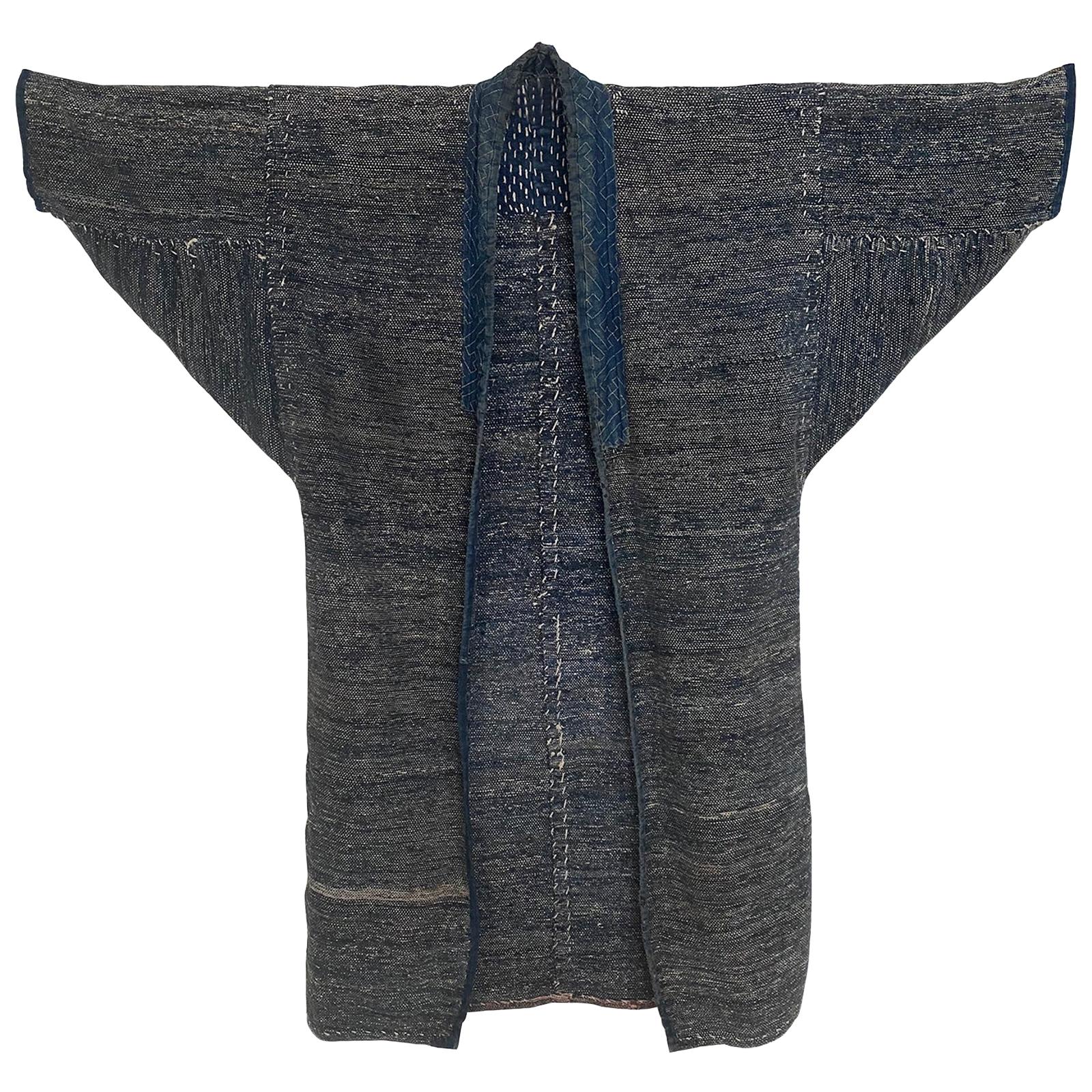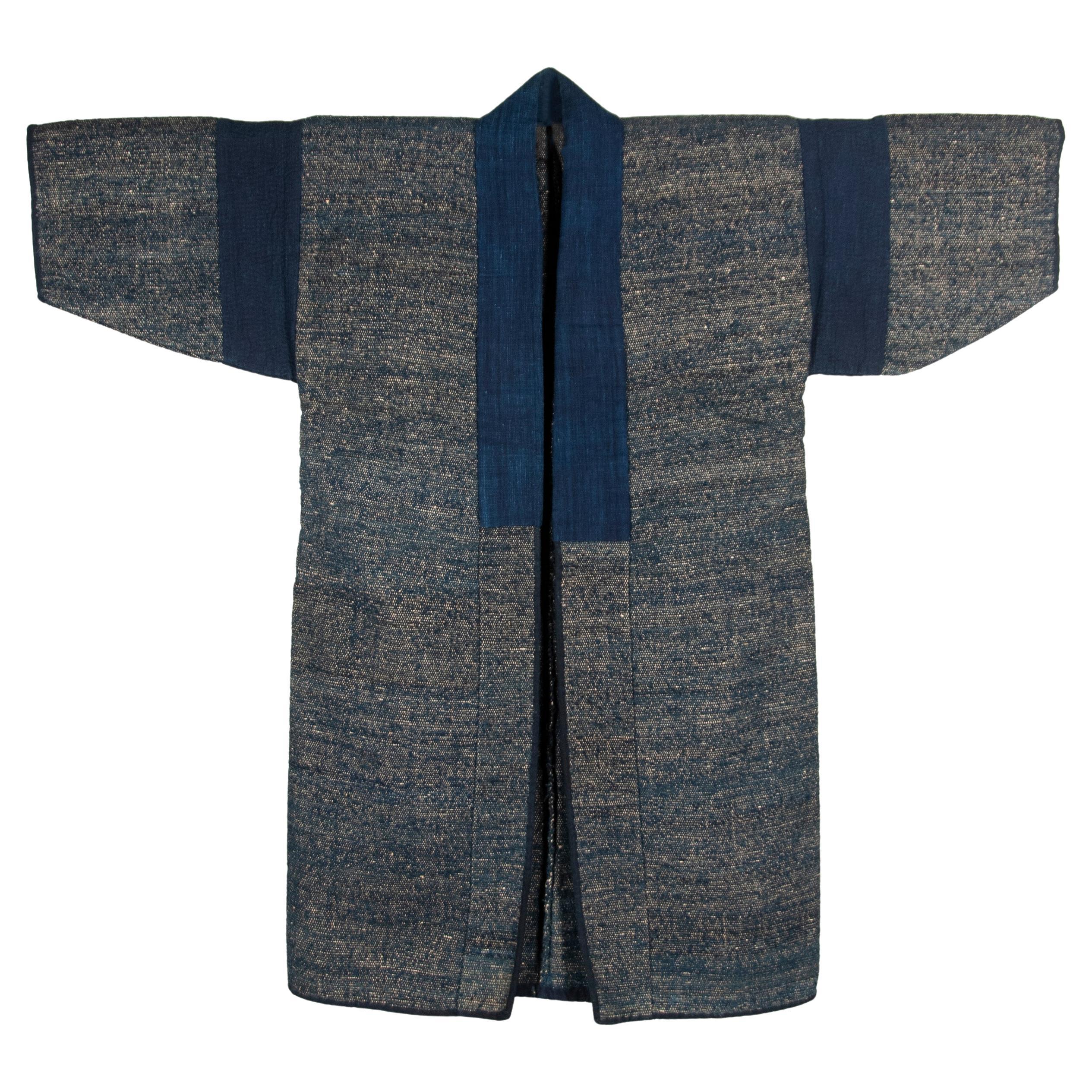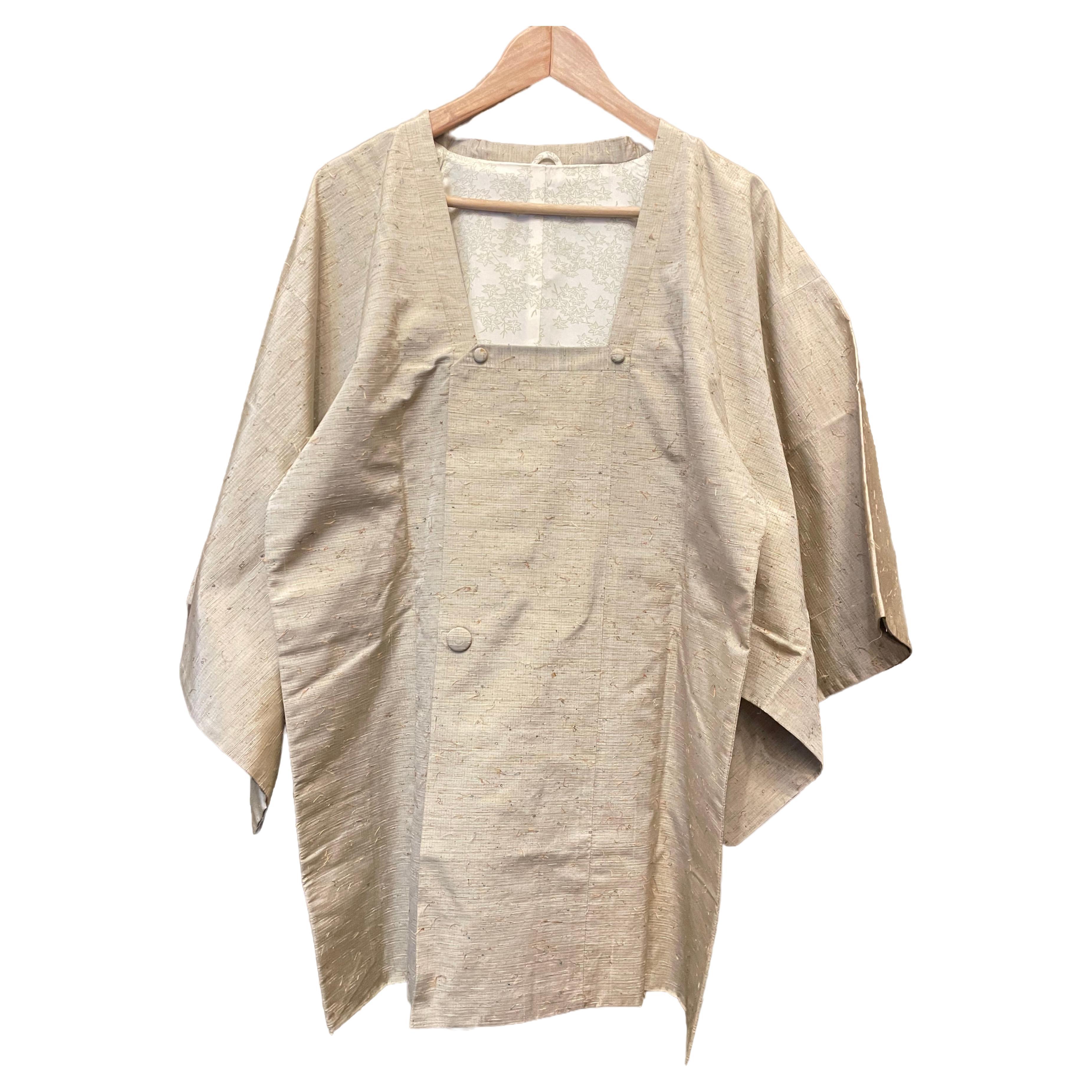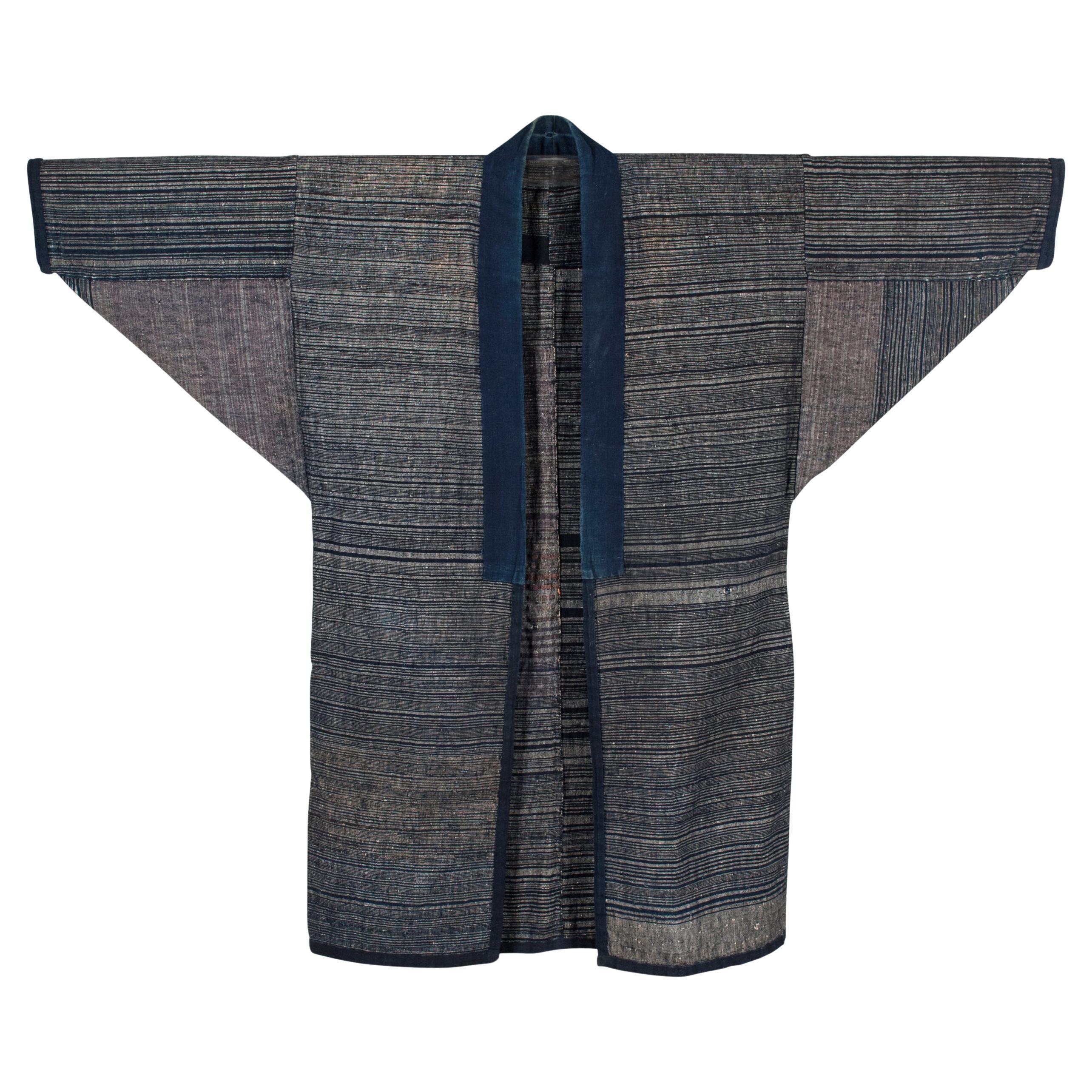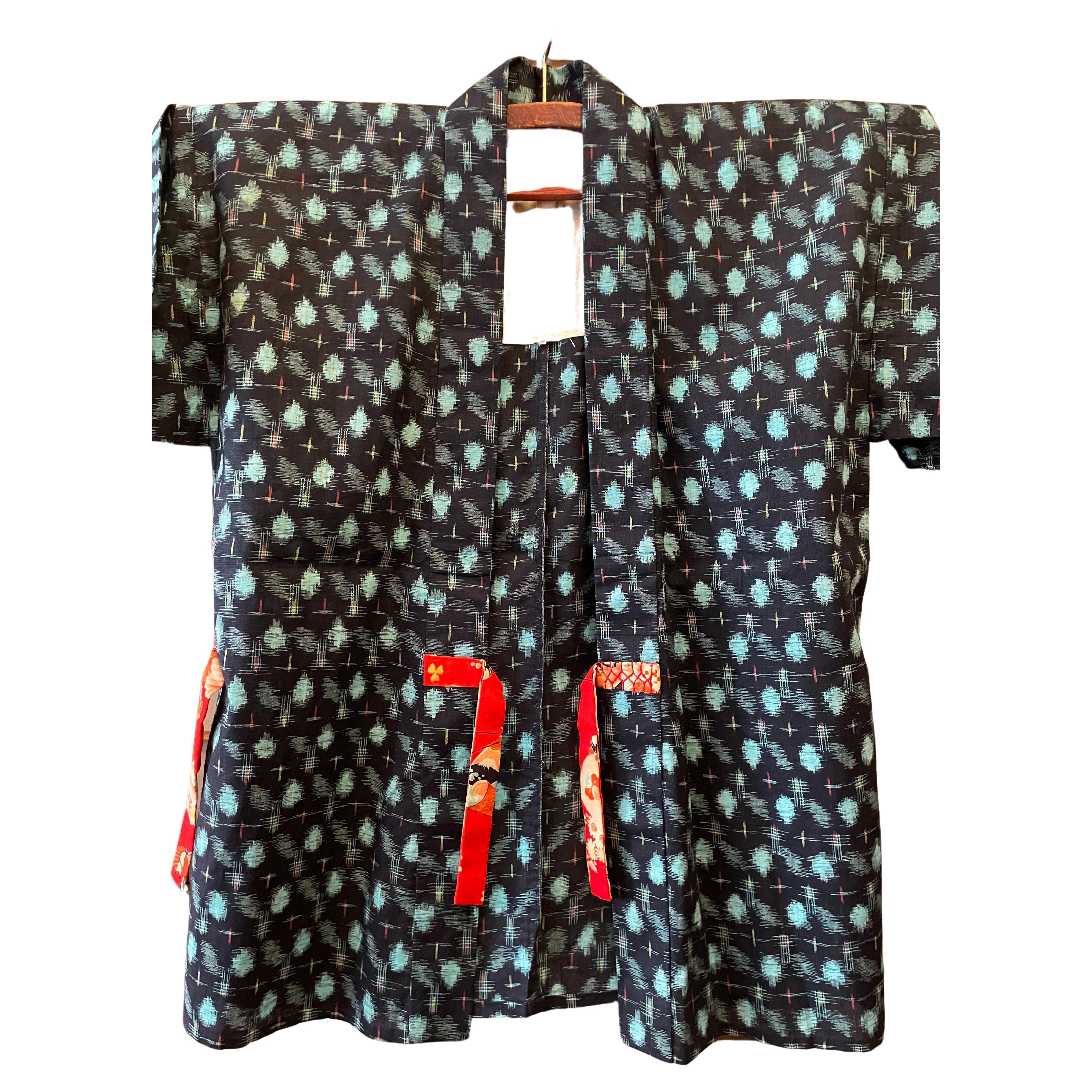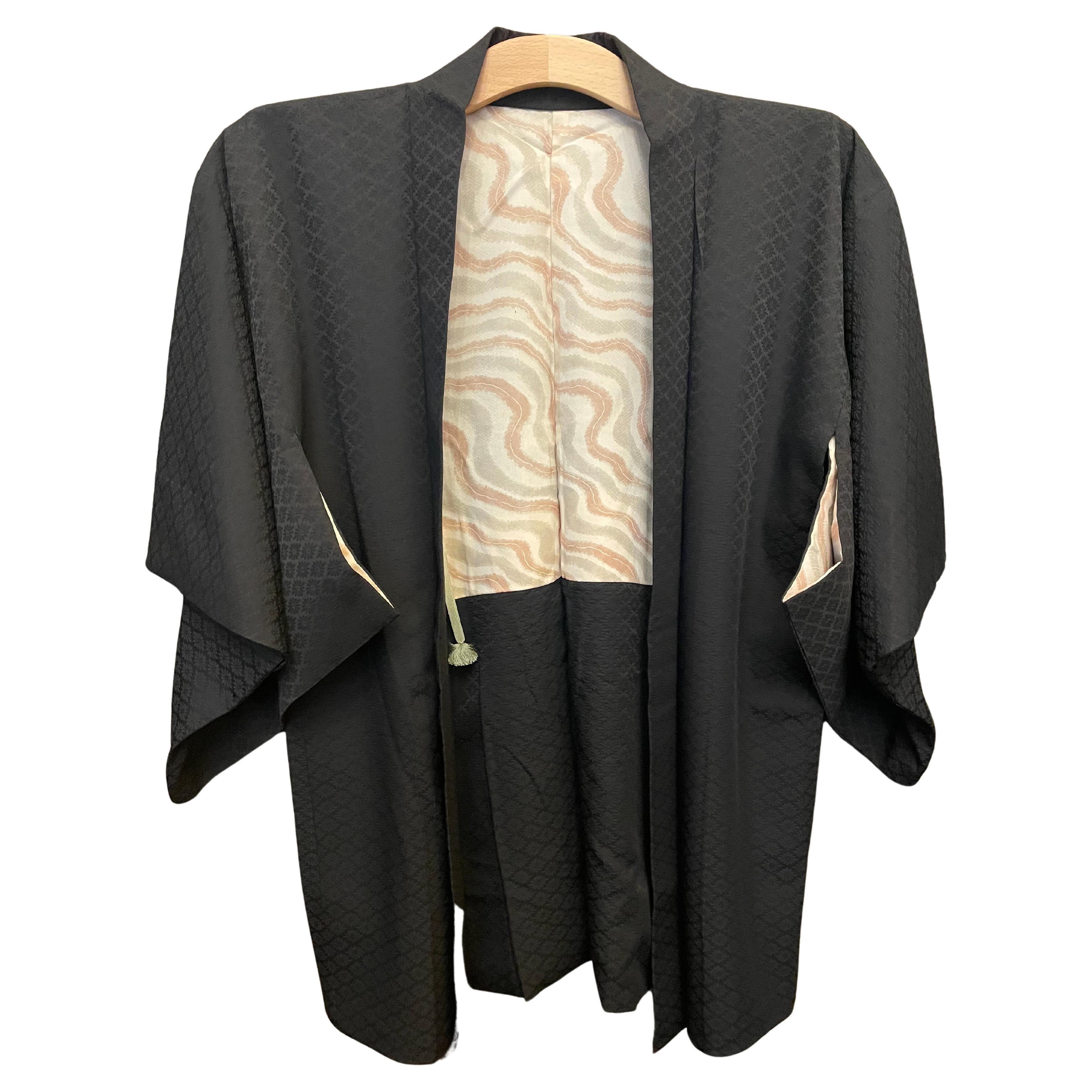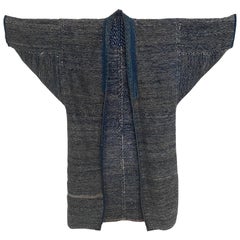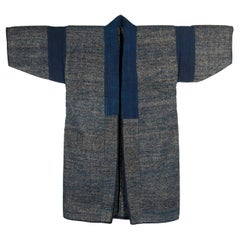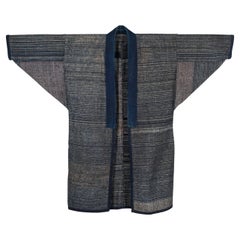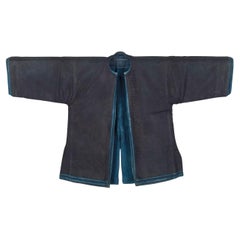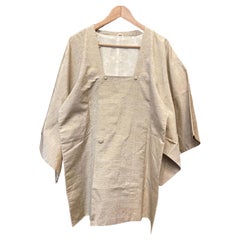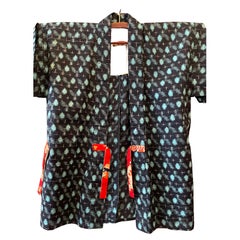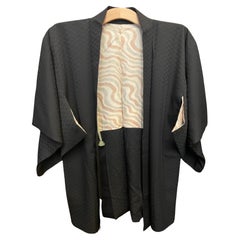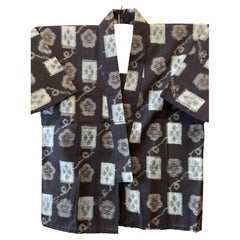Items Similar to Japanese Sashiko-stitched Cotton Rodogi Work Coat, Early 20th Century
Want more images or videos?
Request additional images or videos from the seller
1 of 7
Japanese Sashiko-stitched Cotton Rodogi Work Coat, Early 20th Century
$1,400
$1,75020% Off
£1,072.93
£1,341.1620% Off
€1,233.15
€1,541.4320% Off
CA$1,966.37
CA$2,457.9620% Off
A$2,200.73
A$2,750.9120% Off
CHF 1,152
CHF 1,44020% Off
MX$26,734.87
MX$33,418.5920% Off
NOK 14,627.51
NOK 18,284.3920% Off
SEK 13,803.56
SEK 17,254.4520% Off
DKK 9,201.43
DKK 11,501.7920% Off
About the Item
Sashiko-stitched cotton Rodogi work coat, early 20th century, Yamagata Prefecture, Japan
A full length coat composed of indigo-dyed cotton with vertical bands of sashiko stitching with reinforcement and repair cotton patches in varying shades of indigo ranging from gray to purple indigo, cotton collar and hem, slightly tapering sleeves, some double patching in interior.
- Dimensions:Height: 41.5 in (105.41 cm)Width: 46.5 in (118.11 cm)Depth: 1 in (2.54 cm)
- Style:Meiji (Of the Period)
- Materials and Techniques:Cotton,Hand-Woven
- Place of Origin:
- Period:
- Date of Manufacture:Early 20th Century
- Condition:Wear consistent with age and use. Minor signs of wear, otherwise in good condition.
- Seller Location:Point Richmond, CA
- Reference Number:Seller: GU-A000361stDibs: LU1778215961801
About the Seller
5.0
Platinum Seller
Premium sellers with a 4.7+ rating and 24-hour response times
Established in 1999
1stDibs seller since 2015
687 sales on 1stDibs
Typical response time: 2 hours
- ShippingRetrieving quote...Shipping from: Point Richmond, CA
- Return Policy
Authenticity Guarantee
In the unlikely event there’s an issue with an item’s authenticity, contact us within 1 year for a full refund. DetailsMoney-Back Guarantee
If your item is not as described, is damaged in transit, or does not arrive, contact us within 7 days for a full refund. Details24-Hour Cancellation
You have a 24-hour grace period in which to reconsider your purchase, with no questions asked.Vetted Professional Sellers
Our world-class sellers must adhere to strict standards for service and quality, maintaining the integrity of our listings.Price-Match Guarantee
If you find that a seller listed the same item for a lower price elsewhere, we’ll match it.Trusted Global Delivery
Our best-in-class carrier network provides specialized shipping options worldwide, including custom delivery.More From This Seller
View AllSaki-Ori Farmers Coat, Northern Japan, Meiji Period
Located in Point Richmond, CA
Saki-ori farmers coat, Northern Japan, Meiji period
A very heavy and substantial saki-ori coat, made of cotton with an indigo kasuri lapel. Several patches of hand sewn stitching ...
Category
20th Century Japanese Meiji Textiles
Materials
Cotton
Antique Japanese Recycled Saki-Ori Farmer’s Jacket
Located in Point Richmond, CA
Antique Japanese Recycled Saki-Ori Farmer’s Jacket
This early 20th C farmer’s jacket from the northern Japan sea coast region was strip woven from repurposed cotton scraps in a tech...
Category
Early 20th Century Japanese Taisho Tribal Art
Materials
Cotton
Antique Japanese Recycled Zanshiori Jacket
Located in Point Richmond, CA
Antique Japanese Recycled Zanshiori Jacket
Zanshi-ori cloth is woven from leftover cotton and silk threads, either from commercial kimono production or from home-produced recycled y...
Category
Early 20th Century Japanese Taisho Tribal Art
Materials
Cotton, Silk
Early 20th Century Chinese Hani Minority Layered Jacket, South China
Located in Point Richmond, CA
Early 20th century Chinese Hani minority layered jacket, South China
A six-layered indigo-dyed jacket made of tightly woven cotton by the Hani minority...
Category
Early 20th Century Chinese Tribal Textiles
Materials
Cotton
Antique Japanese Indigo-Dyed Double Ikat Kimono
Located in Point Richmond, CA
Antique Japanese Indigo-Dyed Double Ikat Kimono
This deeply saturated indigo-dyed kimono is made of heavy-weight hand-spun cotton and precisely patter...
Category
Early 20th Century Japanese Taisho Tribal Art
Materials
Cotton
Rare Antique Japanese Oversized Sleeping Kimono (Yogi)
Located in Point Richmond, CA
Rare Antique Japanese Oversized Sleeping Kimono (Yogi)
This is the outer shell of a type of shaped sleeping kimono known as a yogi. Yogi were in more common use during the Edo and M...
Category
Antique Late 19th Century Japanese Meiji Tribal Art
Materials
Cotton, Linen
You May Also Like
Japanese Silk Jacket Michiyuki 1970s
Located in Paris, FR
This is a Japanese Silk Jacket called Michiyuki.
It was made around 1970s. This Michiyuki Jacket has a pocket and belts inside.
It is not reversi...
Category
Vintage 1970s Japanese Showa Antiquities
Materials
Silk
Japanese Ikat Peasant Cotton Kasuri Jacket with Belts 1970s
Located in Paris, FR
This is a jacket made in Japan called kasuri. This kasuri jacket was made around 1970s.
It was used to wear by some peasants to work. This is made with cotton Ikat.
Dimensions:
Heig...
Category
Late 20th Century Japanese Showa Antiquities
Materials
Cotton
Japanese Silk Haori Jacket Simple Black 1980s MaruniChigaiTakanoHaMon
Located in Paris, FR
This is a silk jacket which was made in Japan.
It was made in Showa era around 1980s.
This haori jacket has a family crest of MaruniChigaiTakanoHaMon.
The haori is a traditional Ja...
Category
Vintage 1980s Japanese Showa Antiquities
Materials
Silk
Japanese Ikat Peasant Kasuri (Haori style) Jacket with Cotton 1970s
Located in Paris, FR
This is a jacket made in Japan called kasuri. This kasuri jacket was made around 1970s.
It was used to wear by some peasants to work. This is made with cotton Ikat.
Dimensions:
Heig...
Category
Late 20th Century Japanese Showa Antiquities
Materials
Cotton
Japanese Vintage Hanten Cotton Jacket 'Asai' 1940s
Located in Paris, FR
Hanten is a type of traditional Japanese garment that is often referred to as a "short coat" or "jacket". `it has a loose, kimono-like design with a straight collar and is typically ...
Category
Mid-20th Century Japanese Showa Antiquities
Materials
Cotton
Japanese Kimono Coat for Women with Silk Chrysanthemum 1950s
Located in Paris, FR
This is a silk jacket (Coat for winter) which was made in Japan.
It was made in Showa era around 1950s.
There is two haori himo to close this jacket.
The haori is a traditional Jap...
Category
Mid-20th Century Japanese Showa Antiquities
Materials
Silk
More Ways To Browse
Japanese Indigo
Vintage Japanese Coat
Japanese Patches
Japanese Indigo Textile
Japanese Sashiko
Japanese Rodogi Coat
Asian Women
Asian Wall Hanging
Textile Art Japan
Chinese Framed Silk
Japanese Kimono Art
Vintage Embroidery Art
Silk Embroidered Panels
Framed Textiles Asian
Asian Style Sofa
Asian Thread Embroidery
Large Suzani
Chinese Silk Embroidery
